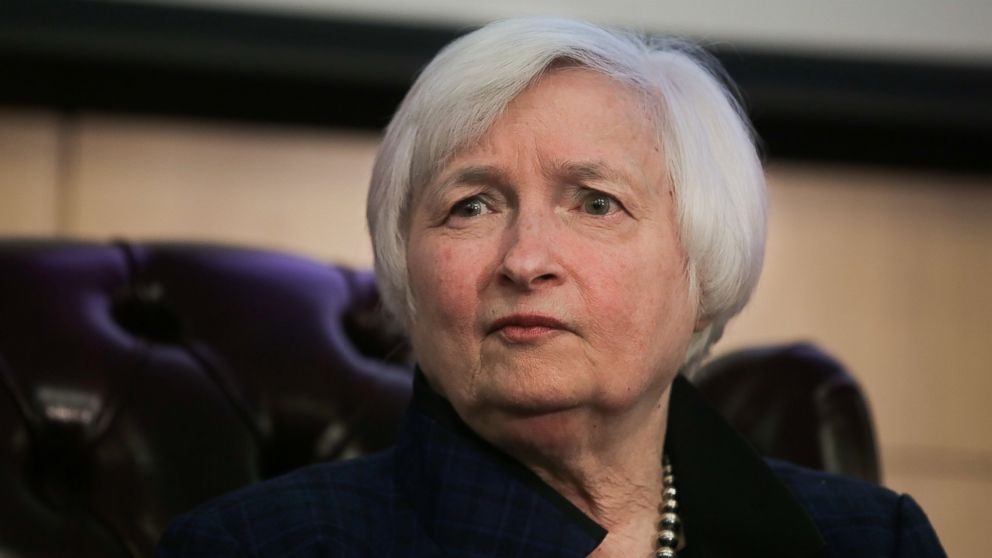How to Handle the Coming Bond Market Turbulence
The playing field for fixed-income investments is shifting.

— -- The Federal Open Market Committee, the Federal Reserve Board group that sets monetary policy, is poised to hike interest rates this year, prompting corporate and Treasury bond investors to seek the best ways to position for the expected impact.
In December of 2016, the Fed increased the federal funds rate, the rate charged to banks on overnight loans from the government, one quarter of 1 percent -- only the second increase in 10 years.
Increases in the federal funds rate raise costs for banks, and banks generally make this up by increasing rates they charge for such things as mortgages, auto and business loans. Interest rates also go up and down on their own, purely from market forces, but the dynamics of this variation are tough to get a grip on. So analysts fixate on the latest utterance of Janet Yellen, the Fed chairwoman, looking for hints of coming rate changes. This is often like reading tea leaves, but there was little ambiguity in Yellen’s statement last December that three more increases might come in 2017. “Might” is as definite as the Fed gets.
Some analysts believe any increases probably won’t amount to much because global rates are so low that banks in Europe are actually charging depositors to keep their money. The reasoning goes: Why would people around the world borrow money from U.S. institutions if they can get it so cheaply in other countries?Yellen’s statement has roiled the bond market because of the teeter-totter relationship between rates on new bonds and the values of existing bonds. When rates go up, the value of existing bonds goes down.
Conversely, when rates fall, bond prices generally rise.
For example, let’s say you just bought a $100 bond with a 20-year maturity paying 4 percent annually, and then rates on such bonds go up to 5 percent. If you go to sell your bond, you’ll have trouble because the new ones just like it are now paying more interest. So to sell it, you must accept less than what you paid. That shortfall is called the discount--in this case, 12 percent, depending on various other factors specific to that bond. Investors can calculate discounts stemming from any given rate increase.
Thus, rising rates create an unfavorable market for bond holders.
Low rates for the last 30 years created a bull market in bonds. Investors felt secure because of sustained low interest rates and scant increases. Increasing rates -- spurred in part by organic market forces including inflationary fears following decades of historically rock-bottom inflation -- appear to be corralling this bond bull, requiring new ways of thinking for investors.
Here are some points for to keep in mind:
If you want to get into new bonds, you could wait for the anticipated rate increases for higher yields.
Consider selling any longer-term bonds you may own -- especially those with maturities of 20 or 30 years -- and take the best price you can get for them, within reason. Taking the discount will at least free up cash for investments with prospects for better returns.
Know the duration of your bonds. Duration is the amount your bond will change in price with a given increase or decrease in interest rates. Durations are widely published.
To protect yourself from post-purchase rate increases on new purchases, look for bonds with short durations and short maturities, such as two or three years. That way, the discount you’d suffer from rate increases would be less.
If you hold a bond to maturity — the end of the contract — the discount isn’t a problem for you because you will get all of the income from the bond that you were due, plus the face value. However, if there’s been enough inflation during that period, your buying power from your total income from the bond and the face value will be substantially diminished.
Or, you could avoid bond-market turbulence by:
Keeping your money in cash. Money market accounts, which are highly liquid short-term bond funds, pay low interest but you have access to your money at a moment’s notice.
Trade investment-grade corporate bonds for lower-rated bonds. Keep in mind that if you enter what’s known as junk bond territory (ratings of less than BB or lower by Standard & Poor’s) you’ll get more yield but you’ll be taking on stock market-like risks. There’s a chance that companies with these low credit ratings won’t be able to repay investors.
Consider preferred stocks. These stocks combine features of bonds—e.g., they pay fixed dividends, comparable to a bond’s interest payment.
For many individual investors, a good alternative to individual bonds is bond funds. With a fund, investors can’t hold bonds to maturity because the fund holds many bonds that are repriced each day to reflect current values, but you can get exposure to a wide diversity of bonds to reduce risk. On the negative side, you have to pay management fees, but this expense tends to be offset by the lower prices these managers secure based on volume.
As with individual bonds, keep an eye on durations, which are calculated as an average figure. Morningstar, the fund rating company, lists average effective durations for bond funds on its website.
Just about every bond fund company offers short-term bond funds. You may also want to consider ultra-short-term bond funds, which aren’t affected much by interest-rate moves.
Bonds will continue to have a place in diversified portfolios, but it will pay to take steps now to position your holdings relative to the anticipated rate increases.
Dave Sheaff Gilreath is a founding principal of Sheaff Brock Investment Advisors LLC. He has more than 30 years of experience in the financial services industry.
Any opinions expressed in this column are solely those of the author.




